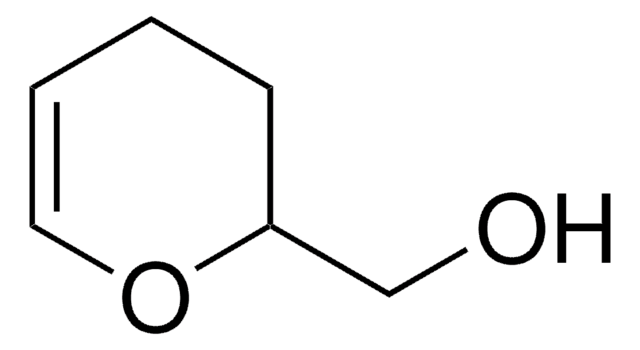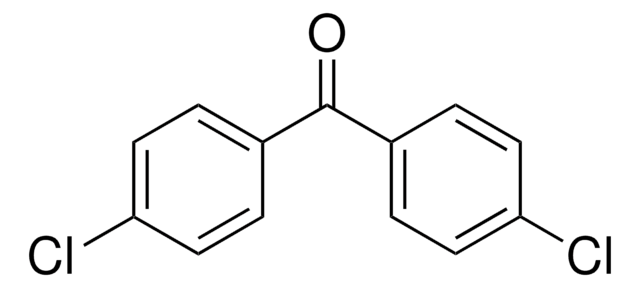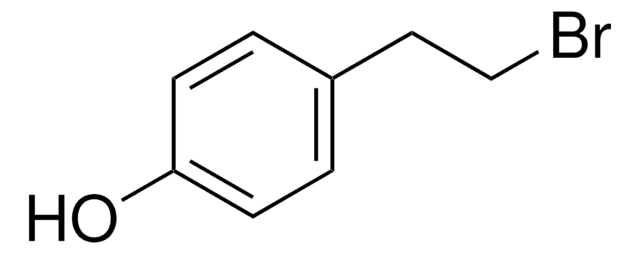All Photos(1)
About This Item
Empirical Formula (Hill Notation):
C8H6INO4
CAS Number:
Molecular Weight:
307.04
Beilstein:
1970746
EC Number:
MDL number:
UNSPSC Code:
12352100
PubChem Substance ID:
NACRES:
NA.22
Recommended Products
Assay
≥99.0%
mp
79-82 °C
storage temp.
2-8°C
SMILES string
[O-][N+](=O)c1ccc(OC(=O)CI)cc1
InChI
1S/C8H6INO4/c9-5-8(11)14-7-3-1-6(2-4-7)10(12)13/h1-4H,5H2
InChI key
GERXSZLDSOPHJV-UHFFFAOYSA-N
Other Notes
For introducing the iodoacetyl group in peptides; Synthesis of N-methyl iodoacetamide
Signal Word
Warning
Hazard Statements
Precautionary Statements
Hazard Classifications
Eye Irrit. 2 - Skin Irrit. 2 - STOT SE 3
Target Organs
Respiratory system
Storage Class Code
11 - Combustible Solids
WGK
WGK 3
Flash Point(F)
Not applicable
Flash Point(C)
Not applicable
Personal Protective Equipment
dust mask type N95 (US), Eyeshields, Gloves
Certificates of Analysis (COA)
Search for Certificates of Analysis (COA) by entering the products Lot/Batch Number. Lot and Batch Numbers can be found on a product’s label following the words ‘Lot’ or ‘Batch’.
Already Own This Product?
Find documentation for the products that you have recently purchased in the Document Library.
K Sutoh et al.
Biochemistry, 27(8), 2964-2969 (1988-04-19)
Subfragment 1 (S1) prepared from rabbit skeletal muscle myosin was digested with trypsin to cleave the 95K heavy chain into three pieces, i.e., the 23K, 50K, and 20K fragments. The trypsin-treated S1 was then cross-linked with p-nitrophenyl iodoacetate. The cross-linker
T Hiratsuka
Biochemistry, 26(11), 3168-3173 (1987-06-02)
When myosin subfragment 1 (S-1) reacts with the bifunctional reagents with cross-linking spans of 3-4.5 A, p-nitrophenyl iodoacetate and p-nitrophenyl bromoacetate, the 20-kilodalton (20-kDa) segment of the heavy chain is cross-linked to the 26-kDa segment via the reactive thiol SH2.
U Ramseier et al.
Analytical biochemistry, 221(2), 231-233 (1994-09-01)
Cysteine residues derivatized with N-methyl iodoacetamide (MIAA) can be analyzed by the Edman sequencing with a high degree of reliability. By HPLC, the phenylthiohydantoin (PTH) derivative of MIAA-modified cysteine eluted between dimethylphenylthiourea and PTH-Ala--a wide gap which is not occupied
Synthesis and characterization of two fluorescent sulfhydryl reagents.
E N Hudson et al.
Biochemistry, 12(21), 4154-4161 (1973-10-09)
Ya Zhang et al.
International journal of nanomedicine, 7, 1015-1022 (2012-03-10)
Polymersomes are nanosized vesicles formed from amphiphilic block copolymers, and have been identified as potential drug delivery vehicles to the inner ear. The aim of this study was to provide targeting to specific cells within the inner ear by functionalizing
Our team of scientists has experience in all areas of research including Life Science, Material Science, Chemical Synthesis, Chromatography, Analytical and many others.
Contact Technical Service









